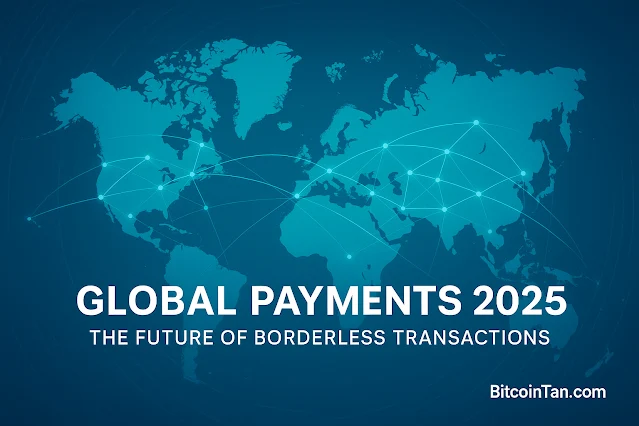Global Payments 2025: The Future of Borderless Transactions
In today's rapidly evolving digital landscape, global payment systems are undergoing significant transformations. Technologies like blockchain, stablecoins, and initiatives from major fintech companies are reshaping how we conduct cross-border transactions. This article explores the latest trends in global payments and how emerging technologies are influencing the future of international finance.
Major Acquisition: Global Payments and Worldpay
Recently, Global Payments announced a $22.7 billion acquisition of Worldpay, aiming to enhance its international presence in the fintech sector. This strategic move expands their reach to over 175 countries, enabling the processing of approximately $3.7 trillion in annual transactions. Despite a 17% drop in Global Payments' stock following the announcement, the company remains optimistic, projecting first-quarter earnings of $2.69 per share.
Barclays and Brookfield: Reshaping the Payments Unit
Barclays has finalized a deal with Brookfield to spin off its payments unit, marking a significant step in the bank's strategy to enhance shareholder value. Under the agreement, Barclays will inject £400 million into its merchant acquiring business, while Brookfield will assist in developing the division into a standalone entity. This move aligns with Barclays' broader strategy to revitalize the bank by expanding consumer and corporate banking while limiting the investment banking arm.
Mastercard: Building a Digital Payment Network
Mastercard is developing a digital payment network similar to Venmo, focusing on crypto assets. With over 100 crypto-focused card programs worldwide and the development of a Multi-Token Network, Mastercard aims to facilitate easier movement between fiat and cryptocurrencies. Partnerships with JPMorgan and Standard Chartered bolster these efforts.
Interledger Foundation: Promoting Global Financial Inclusion
Established in 2019, the Interledger Foundation seeks to promote global digital financial inclusion through the development and promotion of the Interledger Protocol. This protocol enables interoperability between various financial networks, facilitating fast and efficient cross-border payments. Initiatives like Mojaloop and partnerships with organizations such as the Jordan Payments and Clearing House demonstrate their commitment to financial inclusion in emerging markets.
Smart Contracts and Cross-Border Payments
Recent research indicates that smart contracts can enhance the efficiency of cross-border payments. By leveraging blockchain technology and smart contracts, transactions can be executed more quickly, securely, and transparently, while ensuring compliance with international standards like ISO20022.
mBridge: Bridging CBDCs for International Payments
The mBridge project is a multinational Central Bank Digital Currency (CBDC) platform developed to support real-time cross-border payments. With participation from the monetary authorities of Hong Kong, Thailand, the United Arab Emirates, and others, mBridge aims to provide a faster and more efficient method for cross-border transfers.
Stablecoins: A New Alternative for Global Payments
Stablecoins, such as USDC and USDT, are gaining popularity as alternatives for cross-border payments. Major banks and fintech companies, including Bank of America and PayPal, are exploring the stablecoin market to revolutionize cross-border payments using cryptocurrencies. Increasing regulatory support in the US and Europe strengthens this trend.
Related Articles on BitcoinTan
- BANXA Purchases $19 Million Worth of Pi Coins — A Major Signal for the Future of Digital Payments
- Trump Accused of Market Manipulation After Suspending Tariffs
Conclusion
Global payments are undergoing a revolution with the adoption of new technologies like blockchain, stablecoins, and CBDCs. Major companies and financial institutions are racing to leverage these technologies to enhance efficiency and financial inclusion. With these developments, the future of cross-border payments appears brighter and more accessible for all parties involved.
Disclaimer
This article is intended for informational and educational purposes only. The content provided does not constitute financial, investment, or legal advice. Readers are encouraged to conduct their own research and consult with professionals before making decisions based on the information presented in this article.


Post a Comment for "Global Payments 2025: The Future of Borderless Transactions"
Post a Comment